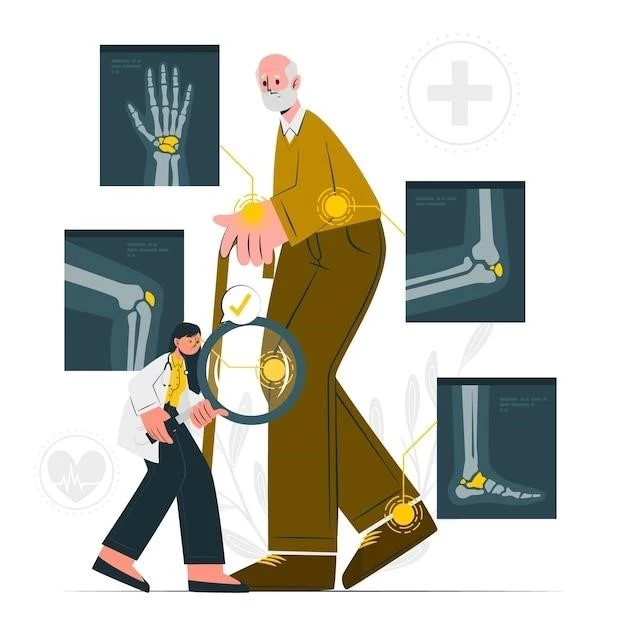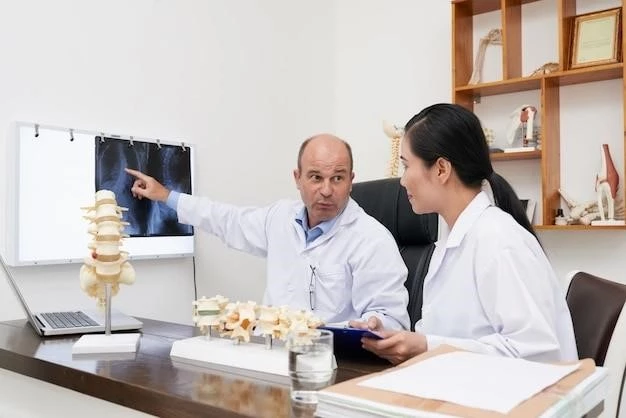Arthrogryposis‚ a condition present at birth‚ can be caused by various factors such as genetic mutations. Treatments may involve surgical interventions and rehabilitation strategies to improve mobility. The impact on daily life can vary‚ but early detection and management are crucial for better outcomes.
Understanding Arthrogryposis
Arthrogryposis is a rare condition characterized by multiple joint contractures at birth. These contractures limit the range of motion in affected joints‚ impacting mobility and overall functionality. The exact cause of arthrogryposis is not always clear‚ but it is thought to result from decreased fetal movement in the womb‚ leading to joint contractures. This lack of movement can be due to genetic factors‚ environmental factors‚ or a combination of both.
Children with arthrogryposis may have stiff‚ immobile joints in different parts of their body‚ such as the shoulders‚ elbows‚ wrists‚ hips‚ knees‚ and ankles. The severity and distribution of joint involvement can vary from one individual to another. Some may have involvement of only a few joints‚ while others may experience widespread joint contractures.
Diagnosis of arthrogryposis often occurs at birth or during prenatal ultrasound screenings if joint contractures are detected. Early intervention is crucial to address the challenges associated with arthrogryposis. Treatment approaches may include physical therapy‚ occupational therapy‚ orthotic devices‚ and in some cases‚ surgical procedures to improve joint function and mobility.

Genetic Factors in Arthrogryposis
Genetic factors play a significant role in the development of arthrogryposis. While the exact genetic mechanisms are not fully understood‚ various genetic mutations have been associated with the condition. In some cases‚ arthrogryposis may be caused by mutations in specific genes that are essential for normal fetal development.
Researchers have identified several genetic syndromes that can present with arthrogryposis as a feature. These syndromes may involve alterations in genes responsible for muscle function‚ neuromuscular signaling‚ or joint development. The inheritance pattern of arthrogryposis can be autosomal recessive‚ autosomal dominant‚ or X-linked‚ depending on the underlying genetic cause.
Additionally‚ environmental factors and maternal conditions during pregnancy can influence the expression of certain genes and contribute to the development of arthrogryposis. Factors such as maternal infections‚ exposure to toxins‚ and vascular disruptions may impact fetal movement and joint development‚ resulting in joint contractures at birth.
Genetic counseling and testing may be recommended for families with a history of arthrogryposis or suspected genetic syndromes to better understand the underlying genetic factors and assess the risk of recurrence in future pregnancies. Overall‚ a multidisciplinary approach involving geneticists‚ pediatricians‚ orthopedic specialists‚ and genetic counselors is essential for the comprehensive management of arthrogryposis.
Surgical Interventions for Arthrogryposis Patients
Surgical interventions play a crucial role in the management of arthrogryposis by addressing joint contractures and improving overall function and mobility in affected individuals. The decision to undergo surgery is typically based on the extent of joint involvement‚ the severity of contractures‚ and the specific goals of treatment.
Common surgical procedures for arthrogryposis patients may include tendon releases‚ joint manipulations‚ and osteotomies to correct deformities and increase range of motion in stiff joints. Tendon transfers and lengthening procedures can help rebalance muscle forces and improve joint alignment‚ allowing for better movement coordination.
In more complex cases‚ where multiple joints are affected‚ sequential surgeries may be necessary to optimize outcomes gradually. Orthopedic surgeons work closely with the rehabilitation team to develop individualized surgical plans tailored to each patient’s unique needs and functional goals.
Postoperative care and rehabilitation are essential components of the surgical process to maximize the benefits of surgery and promote functional recovery. Physical therapy and occupational therapy are integral to helping patients regain strength‚ flexibility‚ and motor skills following surgical interventions.
While surgery can significantly improve the quality of life for arthrogryposis patients‚ it is essential to carefully consider the risks and benefits of each procedure‚ as well as the long-term implications on joint function and mobility. Close collaboration between orthopedic surgeons‚ rehabilitation specialists‚ and patients and their families is key to achieving optimal outcomes in the surgical management of arthrogryposis.
Rehabilitation Strategies for Arthrogryposis Patients
Rehabilitation plays a vital role in the comprehensive management of arthrogryposis‚ aiming to improve mobility‚ independence‚ and quality of life for affected individuals. The rehabilitation team‚ which may include physical therapists‚ occupational therapists‚ and other specialists‚ collaborates to design personalized treatment plans addressing the unique needs of each patient.
Physical therapy focuses on enhancing strength‚ flexibility‚ and motor skills through targeted exercises and activities. Therapists work with patients to improve joint range of motion‚ muscle tone‚ and overall functional abilities. Occupational therapy aims to enhance daily living skills‚ fine motor coordination‚ and independence in activities of daily living.
Orthotic devices such as braces‚ splints‚ and custom orthoses may be prescribed to support weak joints‚ correct deformities‚ and facilitate optimal alignment during movement. Assistive devices like walkers‚ wheelchairs‚ or adaptive equipment may also be recommended to promote independent mobility and participation in daily tasks.
Rehabilitation strategies for arthrogryposis patients are tailored to each individual’s specific needs and goals‚ taking into account the severity of joint contractures‚ muscle strength‚ and functional limitations. Regular therapy sessions‚ home exercise programs‚ and ongoing support from the rehabilitation team are essential for achieving long-term success in managing arthrogryposis.
By addressing physical challenges‚ optimizing functional abilities‚ and promoting independence‚ rehabilitation empowers arthrogryposis patients to lead active and fulfilling lives. The multidisciplinary approach of rehabilitation maximizes the potential for improved mobility‚ enhanced quality of life‚ and overall well-being for individuals with arthrogryposis.
Impact of Arthrogryposis on Daily Life
Arthrogryposis can have a significant impact on daily life‚ affecting mobility‚ independence‚ and participation in various activities. Individuals with arthrogryposis may face challenges in tasks that involve fine motor skills‚ such as writing‚ grasping objects‚ or feeding themselves. Difficulties with mobility and joint stiffness can impact the ability to walk‚ stand‚ or perform daily tasks independently.
Social and emotional well-being can also be influenced by arthrogryposis‚ as individuals may experience frustration‚ isolation‚ or self-esteem issues due to physical limitations. Access to appropriate support services‚ including physical therapy‚ occupational therapy‚ and psychological counseling‚ can play a vital role in addressing these challenges and promoting overall well-being.
Education and employment opportunities may be affected by arthrogryposis‚ requiring adaptations and accommodations to ensure equal access and participation. Assistive technologies‚ workplace modifications‚ and educational support services can help individuals with arthrogryposis overcome barriers and achieve their academic and vocational goals.
Family dynamics and relationships can be impacted by the demands of caring for a loved one with arthrogryposis. Support from family members‚ caregivers‚ and healthcare providers is essential in navigating the physical‚ emotional‚ and practical challenges associated with the condition. Building a strong support network and fostering open communication can enhance overall quality of life for individuals with arthrogryposis.
Despite the challenges it poses‚ arthrogryposis does not define a person’s capabilities or potential. With proper medical care‚ rehabilitation‚ and support‚ individuals with arthrogryposis can lead fulfilling lives‚ pursue their interests‚ and achieve their goals. Empowerment‚ acceptance‚ and resilience are key in navigating the impact of arthrogryposis on daily life and embracing a positive outlook for the future.
